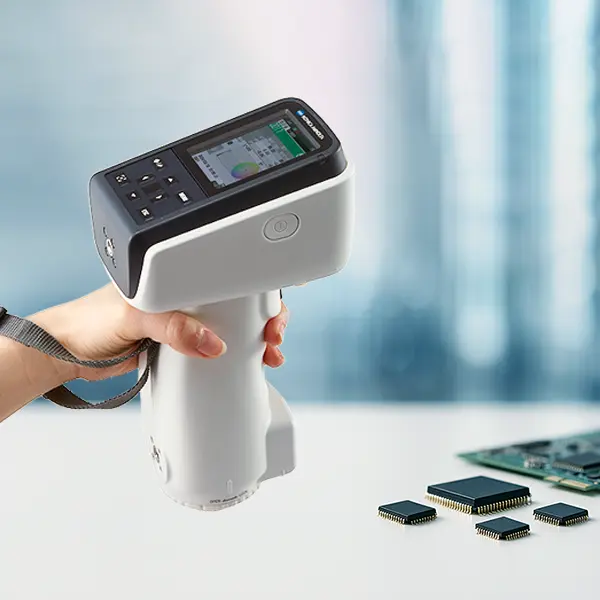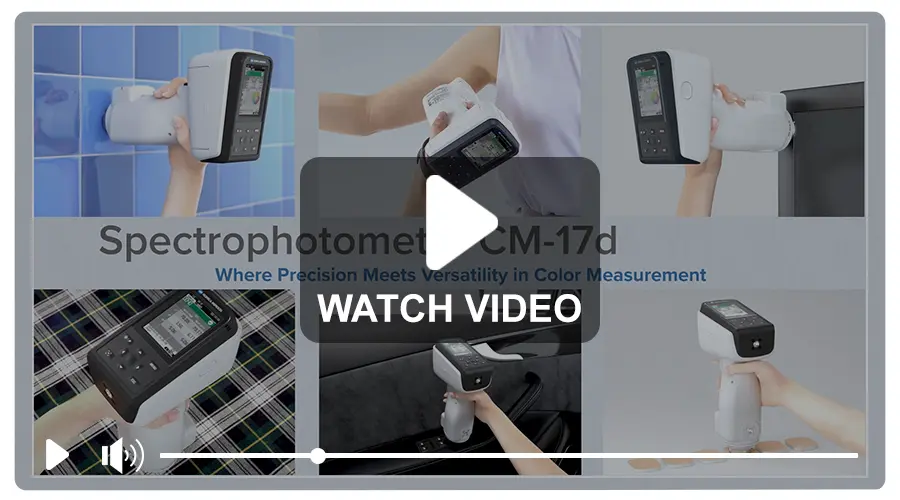Solusi Spektrofotometer untuk Kontrol Warna Semikonduktor dan Komponen Elektronik

Dalam industri semikonduktor dan elektronik, warna lebih dari sekadar atribut visual—sering kali mencerminkan informasi penting tentang komposisi, ketebalan, keseragaman, dan kualitas keseluruhan suatu material. Baik itu substrat papan sirkuit maupun pelapis, film, dan enkapsulan yang digunakan, warna dapat menunjukkan apakah suatu produk memenuhi standar fungsional dan estetika. Bahkan perubahan terkecil dalam rona atau pantulan warna dapat mengindikasikan masalah pada bahan baku, kesalahan produksi, atau potensi kegagalan produk.
Dalam industri yang sangat presisi, dimana konsistensi adalah hal yang terpenting, subjektif inspeksi visual tidak lagi memadai. Produsen semikonduktor dan komponen elektronik kini bergantung pada data warna yang objektif dan terukur untuk memastikan pengulangan dan akurasi dalam lini produksi mereka. Spektrofotometer telah menjadi alat penting dalam proses ini, menyediakan informasi kolorimetri dan spektral terperinci yang membantu mendeteksi deviasi, mempertahankan kontrol kualitas, dan mendukung inovasi produk.
Kontrol Kualitas Semikonduktor dan Komponen Elektronik dengan Spektrofotometer
Spektrofotometer merupakan alat penting dalam manufaktur semikonduktor dan komponen elektronik, yang menjawab tuntutan unik akan presisi dan konsistensi warna di berbagai area penting. Salah satu kegunaannya yang signifikan adalah dalam manajemen warna untuk papan sirkuit elektronik dan material substrat. Pada tingkat material, spektrofotometer memungkinkan pemeriksaan kualitas substrat dan bubuk konduktif, memastikan kepatuhan terhadap standar warna. Spektrofotometer juga dapat membantu mendeteksi perubahan warna selama penyimpanan, yang dapat mengindikasikan kontaminasi atau degradasi. Dalam perakitan dengan lapisan anti-reflektif (AR), spektrofotometer dapat membantu mengevaluasi sifat optik penting seperti reflektansi, warna, dll., yang memastikan kinerja dan konsistensi visual.
Dalam aplikasi fotoresis, spektrofotometer menyediakan data warna dan reflektansi spektral, memberikan wawasan tentang ketebalan lapisan dan kualitas pengeringan yang memungkinkan optimalisasi kinerja fotolitografi. Selain itu, spektrofotometer dapat digunakan untuk memverifikasi warna sablon, seperti teks putih, untuk memastikan kontras dan keterbacaan yang tepat. Spektrofotometer juga berperan penting dalam pemeriksaan kualitas film konduktif transparan, di mana ketebalan film sering berkorelasi dengan nilai warna, terutama nilai b dalam ruang warna. Untuk aplikasi LED putih, spektrofotometer dapat mengukur reflektansi spektral secara akurat untuk mengevaluasi reflektivitas cahaya material seperti pelat putih (reflektor) dan masker solder putih.
Dalam mengevaluasi enkapsulan dan perekat semikonduktor, disarankan untuk menggunakan spektrofotometer dengan kemampuan pengukuran warna reflektansi dan transmitansi. Ketebalan film enkapsulan atau perekat secara signifikan memengaruhi sifat optiknya, dengan film yang lebih tipis memungkinkan transmisi cahaya yang lebih baik. Mengukur data warna reflektansi dan transmitansinya memberikan pemahaman yang komprehensif tentang perilaku material ini. Selain itu, selama pengembangan produk atau pengendalian mutu, bentuk enkapsulan dan perekat yang telah diencerkan ini diawetkan menjadi film tipis. Memperoleh data warna transmitansi dari film yang diawetkan ini membantu mengevaluasi kinerja kejernihan dan sifat pelindung material setelah mengeras.
Solusi Pengukuran Warna Konica Minolta untuk Industri Semikonduktor dan Elektronik
Konica Minolta Sensing, didukung oleh keahlian selama puluhan tahun dalam ilmu warna dan pengukuran presisi, menyediakan berbagai macam larutan spektrofotometer dirancang untuk memenuhi persyaratan ketat industri semikonduktor dan elektronik, mulai dari inspeksi bahan baku hingga kontrol kualitas produk akhir. Di antaranya adalah Spektrofotometer Konica Minolta CM-17d, dirancang untuk kinerja luar biasa pada komponen kecil atau melengkung. Desain ergonomis vertikalnya memastikan pengukuran yang stabil dan pengoperasian satu tangan yang nyaman, bahkan pada komponen yang bentuknya tidak beraturan. Jendela bidik kamera terintegrasi memungkinkan penyelarasan yang presisi pada area mikro untuk evaluasi warna yang akurat dan berulang. Selain itu, Spektrofotometer CM-17d kompatibel dengan sistem otomasi, menjadikannya solusi yang dapat diandalkan untuk kontrol kualitas dan lingkungan produksi yang menuntut toleransi warna dan data yang dapat dilacak.
TONTON VIDEONYA
Penyebutan penting lainnya adalah Spektrofotometer CM-3700A Plus, model benchtop unggulan Konica Minolta, dirancang untuk aplikasi yang menuntut tingkat presisi pengukuran warna tertinggi. Model ini mendukung pengukuran warna reflektansi dan transmitansi untuk material buram, transparan, dan tembus cahaya, sehingga sangat berharga untuk mengevaluasi enkapsulan semikonduktor, perekat, dan material lainnya. Dengan keunggulan perjanjian antar instrumen (IIA) dan pengulangan, bahkan pada sampel dengan reflektansi rendah atau berwarna gelap, CM-3700A Plus memastikan hasil yang konsisten dan dapat dilacak di seluruh lingkungan produksi dan R&D global.

Spektrofotometer CM-17d (kiri) dan Spektrofotometer CM-3700A Plus (kanan)
Kedua spektrofotometer ini didukung oleh Konica Minolta Perangkat lunak SpectraMagic NX2—sebuah platform canggih dan ramah pengguna yang menyediakan kemampuan canggih untuk analisis dan pelaporan data. Dirancang untuk menyederhanakan manajemen warna, perangkat lunak generasi terbaru ini memungkinkan pengorganisasian yang mulus, analisis mendalam, dan visualisasi hasil pengukuran yang jelas, membantu pengguna membuat keputusan yang tepat dengan percaya diri.
Siap untuk meningkatkan kontrol kualitas semikonduktor dan elektronik Anda dengan pengukuran warna yang tepat dan andal? Hubungi ahli kami untuk mempelajari lebih lanjut tentang solusi pengukuran warna kami atau untuk menjadwalkan konsultasi atau demonstrasi gratis.

